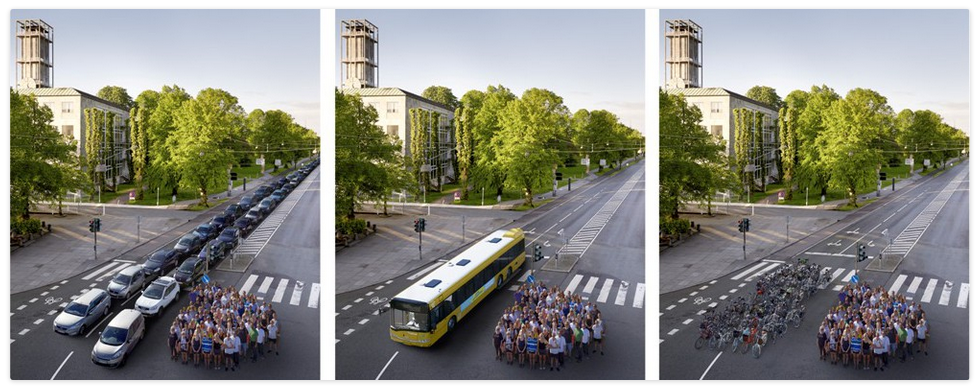Aarhus is Denmark’s second-largest city, located on the east coast of the Jutland peninsula at the same distance from Copenhagen as from Hamburg. As a green city, Aarhus is not only striving for successful climate mitigation, but has also made great progress on climate adaptation. For example, Aarhus University has researched how to turn the potential risk of increased rainfall into an opportunity to develop new recreational areas. One of the best cities for bicycling in the world, Aarhus is also a strong player on the global wind energy market and intends to be carbon-neutral by 2030.
With the wind at our back
Founded by Vikings in the 8th century, Aarhus is today a city with an interesting history and plans for the future. The fast-growing city is home to 320,000 inhabitants, of whom more than 50,000 are students – Denmark’s highest percentage of students in relation to the total population. Surrounded by a high percentage of agricultural land, clean tech companies and research institutes, Aarhus City Council was visionary enough to decide on making Aarhus a carbon-neutral city by 2030. The City realised that the diversity of participants and solutions is key; therefore, part of the plan is to get citizens, academia and enterprises to join the agenda. Important measures are to reduce energy consumption and increase the share of renewable energy sources. This is where the city’s love for wind comes in. Aarhus already hosts several wind power industries and there are plans to erect more wind turbines. The City aspires to be “a solid testing ground for wind technologies” and supports the establishment of smart electricity infrastructure that can utilise wind power as the main energy source.
Roll along at your own pace
As a fairly concentrated city in a relatively flat country, Aarhus had something of a head start in becoming one of the world’s best cities for cyclists and was also an early adopter of creative methods to encourage more inhabitants to choose the bike instead of the car. The City has gone from building Denmark’s first bicycle lanes to creating a sustainable mobility plan: offering e-bikes and commuter bikes for rent; free air stations for pumping bike tires; a city map app for cyclists; and, since 2013, city bikes. The 450 city bikes are available from April to October and can be found at 56 locations throughout the city. Usage is free but a 20 DKK (€2.70) coin is needed as deposit. However, late-night cyclists need to bring their own bike lights. This type of municipal bike-sharing system is found in several cities all over Europe today, but Aarhus began investigating the possibilities in 1999, which shows the city’s affinity for being a first-mover.
Clusters, culture and change
One of the successes of Aarhus as a green city is the active participation and co-operation by so many different actors in the area. Two examples are the wind energy cluster covering the entire value chain regionally and the new school, Navitas, where 2,000 engineering students, teaching staff and researchers will share space with 400–600 employees connected to the INCUBA Science Park. For example, if the municipality or a company pushed for society’s transition to sustainable resources on its own, not much would change. However, the outcomes will be different when people come together, make resources available and see the good use in constructive communication based on sustainable values. Another angle for pushing a social transition is to see the sustainability potential in every case. For example, Aarhus has been elected the European Capital of Culture for 2017, and will take the opportunity to show the necessity of connecting culture, art and sustainability for a thriving future urban society.
Regional dimension
As banks, companies, universities and municipalities divest from fossil fuels one after the other, and the world’s political leaders subsequently raise climate ambitions and sharpen sustainability legislation, Aarhus has its aim set true. Already a focal point for wind turbine production and renewable energy research, Aarhus also has many lessons to share on sustainable urban mobility and cross-sector co-operation. Laying the foundation for improved health and life quality, achieved climate goals and future jobs in several sectors is just the beginning of what Aarhus can mean for the region and for Denmark as a nation.

Learn more…